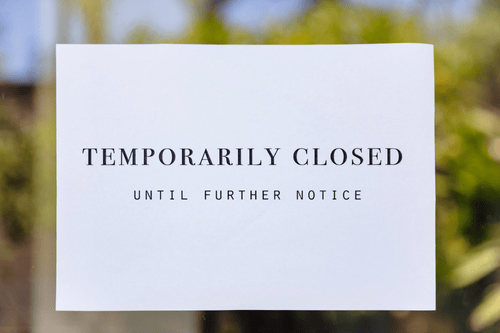Get Appointment
- contact@wellinor.com
- +(123)-456-7890
Business Interruption Insurance
The Importance of Additional Coverages and Extensions in the Business Income and Extra Expense Form
When organizations face unexpected disasters, preventing operational disruptions or temporary closures can be a significant challenge. Even short shutdowns can lead to expensive consequences. This is where business interruption insurance plays a crucial role. This policy provides vital financial protection when an organization's normal business operations are interrupted due to covered events, such as fires, theft, vandalism, or severe weather conditions. Often referred to as business income insurance, this coverage can be added to commercial property insurance or included in a business owner’s policy, which combines property and liability coverage. The business income and extra expense coverage form is utilized by employers to secure business interruption insurance. The main agreement within this form states that the insurer will reimburse lost income and various operating expenses resulting from business interruptions caused by covered events that lead to direct physical damage at an insured location. This form also includes additional coverages and extensions.
Given this, it is essential for organizations utilizing this form to thoroughly review its additional coverages and extensions, ensuring their business interruption insurance meets their specific risks. This overview outlines the form, highlights related coverage options, and offers tips for employers when securing business interruption insurance.

Overview of the Business Income and Extra Expense Coverage Form
The business income and extra expense coverage form, issued by Insurance Services Office Inc. (ISO), serves as a standard document used by many insurance providers to define key protections available under business interruption insurance although each carrier offers their own unique options. The standard form provides financial coverage for specific expenses that may arise if an organization must halt operations or temporarily close due to direct physical damage from covered perils. In the event of a covered incident, the standard form states that business interruption insurance can help reimburse the following typical operating costs during the restoration period:
- Income that the organization would have earned during normal operations.
- Commercial mortgage, rent, lease, loan, and tax payments due during the disruption.
- Payroll expenses to maintain employee wages during a closure.
Additionally, there are extra expense coverages under business interruption insurance. This coverage can help pay for reasonable additional expenses incurred (beyond standard operating costs) during disruptions, aiding organizations in resuming operations. These expenses may involve relocating to a temporary business site, expedited shipping costs for essential materials, and overtime wages for employees working extra hours to minimize downtime.
Additional Coverages
The business income and extra expense coverage also offers additional coverage for organizations to consider. Here’s an overview of these options:
- Civil Authority Coverage: This coverage compensates for operating costs and extra expenses during government-mandated business closures (e.g., curfews or evacuation orders) resulting from covered perils. Coverage typically begins 72 hours after the closure starts and lasts up to four consecutive weeks.
- Alterations and New Buildings Coverage: This can cover typical operating costs and extra expenses from disruptions caused by covered perils resulting in direct physical damage to new commercial structures, whether completed or under construction, including alterations, additions, and related machinery and materials stored within 100 miles of an insured location.
- Extended Business Income Coverage: This reimburses lost income occurring after the restoration period ends but before normal operations fully resume. It typically lasts either 60 days following the restoration period or the duration needed to restore operations to pre-disruption levels, whichever is shorter.
- Interruption of Computer Operations Coverage: This can help cover typical operating costs and extra expenses caused by interruptions in computer operations due to destruction or corruption of electronic data from covered events. It generally has a maximum coverage limit of $2,500 unless stated otherwise in the policy.
Coverage Extensions
In addition to the additional coverages, the business income and extra expense coverage form provides several coverage extensions, including:
- Newly Acquired Locations: This extends business interruption coverage to disruptions from covered perils causing direct physical damage to newly acquired commercial property for a specified period, up to $100,000 per location unless otherwise specified in the policy.
- Off-Premises Utility Failures: This extends coverage to disruptions caused by utility failures off the premises, reimbursing lost income from interruptions of off-site utility service lines or facilities supplying these services.
- Dependent Property: This coverage extends to disruptions from covered perils causing direct physical damage to essential property operated by another party, such as customers, suppliers, or business partners.
Tips for Securing Business Interruption Insurance
Employers can consider the following best practices when purchasing and maintaining adequate business interruption insurance:
- Perform a Risk Assessment: Organizations should review their specific business interruption risks and analyze the potential impacts of temporary closures to determine appropriate coverage levels and essential policy features.
Consult Experts: Engaging with trusted insurance professionals can help organizations understand their options and identify any gaps in coverage, enabling them to secure additional protections relevant to their operations.
Conduct Policy Reviews: As business interruption risks change over time, it’s vital for organizations to regularly review their coverage and update it as necessary to suit their evolving needs.
Maintain Proper Documentation: When disruptions occur, keeping detailed records and documentation of associated losses is crucial. Providing this information to insurance carriers can facilitate a smoother claims process and timely payouts, ensuring financial stability and operational success.
Conclusion
Business interruption insurance is crucial for helping organizations remain resilient during unforeseen disasters and mitigating the impact of related disruptions. By reviewing the protections offered by this policy and considering the available additional coverages and extensions, organizations can tailor their business interruption insurance to meet their specific needs. Contact us today for more insurance solutions.
Click and learn about our approach to drafting commercial insurance coverage solutions.
